The ‘Sarajevo 1425 Days Under the Siege – War Tour’ offers visitors a unique opportunity to explore the tumultuous history of the Bosnian War. Led by knowledgeable guides, participants are taken to significant sites and landmarks in Sarajevo, gaining a deeper understanding of the war’s impact.
Through firsthand accounts and impactful stories, this immersive experience educates and provides a space for reflection. Whether seeking insight or paying homage, this tour allows visitors to engage with history and honor Sarajevo’s enduring spirit.
Good To Know

- The meeting point for the ‘Sarajevo 1425 Days Under the Siege – War Tour’ is Ferhadija 19, passage next to Cathedral of Jesus’s Sacred Heart.
- Hotel pickup is available for free.
- The tour requires a minimum number of travelers and will be cancelled if the minimum is not met, with a full refund or alternative date/experience offered.
- The tour starts at 02:00 PM and ends at the meeting point.
- Good weather is required for the tour, and if it is cancelled due to poor weather, a refund or alternative date will be offered.
- The tour can be cancelled for a full refund up to 24 hours in advance, and cancellations made at least 24 hours before the start time also receive a full refund.
- No refund is provided for cancellations made less than 24 hours before the start time, and changes made less than 24 hours before the start time are not accepted.
- The tour has received an overall rating of 5.0 based on 159 reviews from Viator and Tripadvisor.
- The reviews by Viator travelers have been checked for authenticity.
- Key takeaways from specific reviews include the tour being interesting and informative about the Bosnian war and siege, the guide’s personal experience adding to the tour, the tour offering a dive into Sarajevo history and being highly recommendable, and the tour presenting the conflict and pain in Sarajevo factually, honestly, and humanly while also providing a learning experience and fun conversation.
The Start of the Siege
The siege of Sarajevo began on April 5, 1992, marking the start of 1425 days of hardship and suffering for the city’s residents.
The impact of the siege on the city’s infrastructure was devastating. The once vibrant and bustling city was reduced to ruins as a result of constant shelling and sniper attacks. Buildings were destroyed, roads were impassable, and basic amenities such as electricity and water supply were severely disrupted.
The psychological effects of living under siege were equally devastating. The constant fear and uncertainty took a toll on the mental health of the residents. Many suffered from anxiety, depression, and post-traumatic stress disorder.
The siege not only physically destroyed the city but also left deep scars on the minds and hearts of its people.
Find more activities and experiences we've covered in Sarajevo.
Life During the Siege
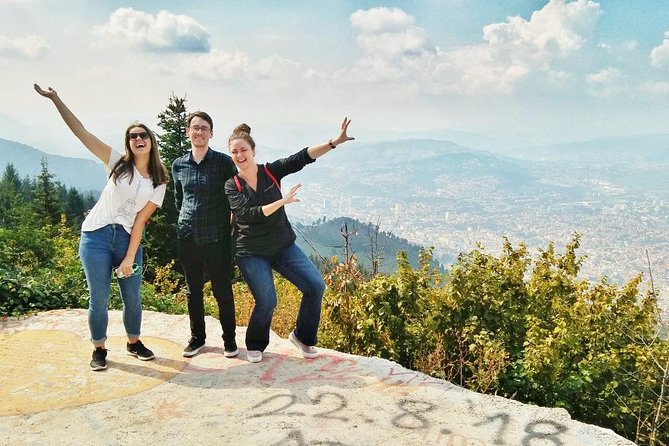
During the siege, residents of Sarajevo faced unimaginable hardships and daily struggles for survival. Life became a constant battle as they navigated through the horrors of war. Here are three aspects that defined life during the siege:
Daily Routines: The siege disrupted normal life in Sarajevo, forcing residents to adapt to a new reality. Simple tasks like finding food and water became arduous challenges. People formed long queues for basic supplies, and electricity and heating were scarce commodities. The city’s infrastructure was severely damaged, making transportation difficult. In this harsh environment, daily routines revolved around survival.
Psychological Impact: The prolonged siege took a heavy toll on the mental well-being of the residents. The constant threat of shelling and sniper fire created a climate of fear and anxiety. Witnessing the destruction of their city and the loss of loved ones had a profound psychological impact. Post-traumatic stress disorder and depression were common among the survivors, and many struggled to regain a sense of normalcy after the war.
Resilience and Solidarity: Despite the unimaginable challenges, the people of Sarajevo showed remarkable resilience and solidarity. Communities came together to support one another, sharing resources and providing emotional support. The siege fostered a spirit of unity and determination among the residents, who found strength in their shared struggle for survival.
Daily Struggles and Survival
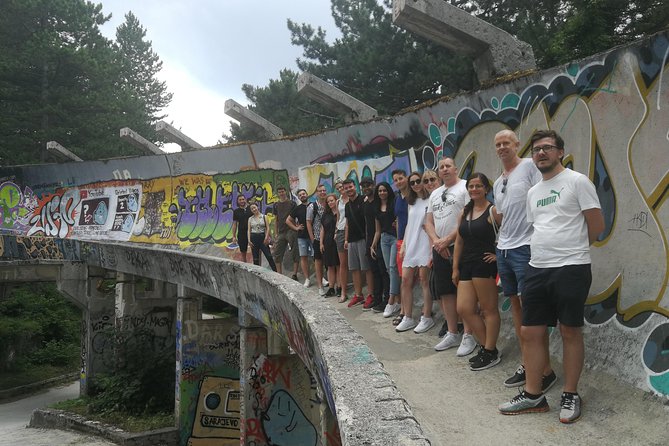
Amidst the siege, Sarajevo’s residents fought through daily struggles and fought for survival. Life during the siege was marked by constant fear, as the city was surrounded by enemy forces and subjected to relentless shelling and sniper attacks.
Basic necessities such as food, water, and electricity became scarce, forcing residents to find creative ways to meet their needs. Survival techniques included growing vegetables on rooftops and in small gardens, forming communal kitchens to share limited resources, and relying on aid convoys for essential supplies.
The lack of medical care posed another challenge, with hospitals and clinics often targeted by the enemy. Despite these hardships, the people of Sarajevo showed incredible resilience and solidarity, supporting each other and finding ways to persevere through the darkest days of the siege.
Heroes and Heroines of Sarajevo
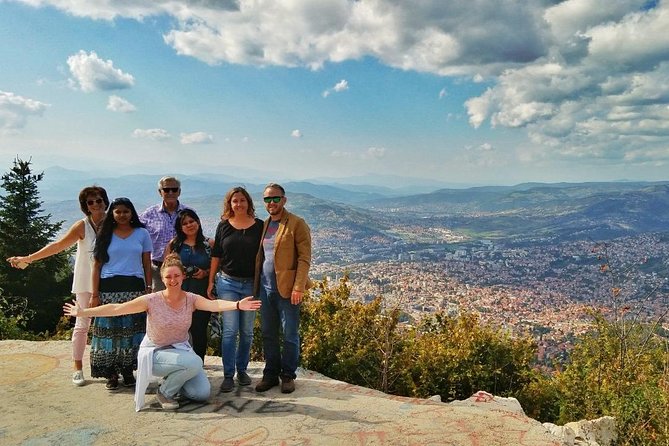
Many heroes and heroines of Sarajevo risked their lives and worked tirelessly to provide aid and support to the besieged city. Their stories of resilience in Sarajevo during the war are truly inspiring.
Here are three examples of Sarajevo war heroes:
Vedran Smajlovic, the Cellist of Sarajevo, played his cello in the midst of the war, bringing hope and solace to the people. His haunting melodies echoed through the city, symbolizing the indomitable spirit of the Sarajevans.
Ferida Osmanovic, a brave young woman, volunteered as a nurse in a makeshift hospital. Despite the constant danger and lack of medical supplies, she selflessly cared for the wounded and saved countless lives.
The White Angels, a group of young football fans, risked their lives to deliver food, water, and other necessities to those in need. They navigated through sniper-infested streets, showing unwavering determination and compassion.
These heroes and heroines embody the strength and resilience of the Sarajevo people during those 1425 days under siege.
Destruction and Rebuilding
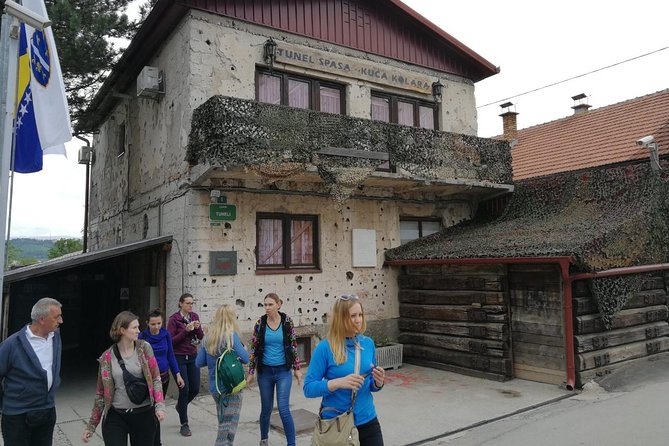
The city of Sarajevo experienced extensive destruction during the 1425 days of siege, but it has since been rebuilt. The destruction caused by the war had a significant impact on the local community.
Many buildings, including homes, schools, and cultural institutions, were damaged or destroyed. The infrastructure was severely affected, with roads, bridges, and utilities needing extensive repairs.
The rebuilding process was a challenging and lengthy endeavor, requiring the cooperation and support of the local government, international organizations, and the community itself. Despite the challenges, the city of Sarajevo has made remarkable progress in rebuilding and restoring its infrastructure and cultural heritage.
Today, visitors can witness the resilience and determination of the local community as they continue to rebuild and create a better future for Sarajevo.
- Sarajevo: Tour to Mostar, Sufi House, Počitelj & Kravice Falls
- ROSES of SARAJEVO (SARAJEVO Siege Tour 1992/1995) – Tunnel of Hope 5 Locations
- Sarajevo War Tour: a Veteran'S Story of the Siege (Fees Included)
- Transfer From/To Sarajevo – Neum
- Split: 1-Way to Sarajevo With Mostar, Blagaj, Kravica Falls
- Sarajevo: Private 1-Way Transfer To/From Split
Cultural Resilience in the Midst of War
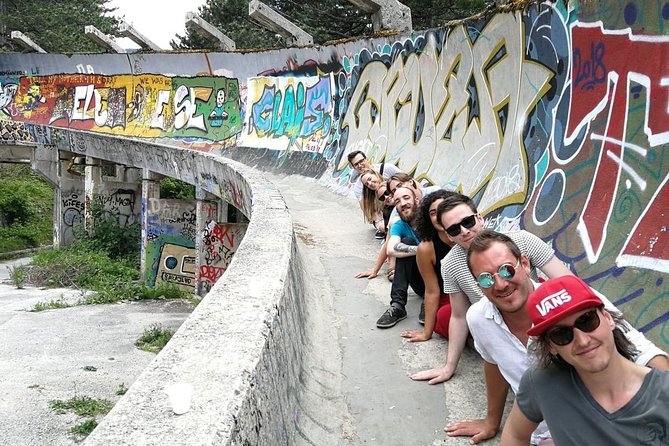
The local community in Sarajevo demonstrated remarkable cultural resilience during the midst of the war as they preserved and protected their heritage. Despite the destruction and chaos surrounding them, the people of Sarajevo remained committed to preserving their cultural identity.
Resilience and Resistance: The people of Sarajevo showed incredible resilience in the face of adversity. They refused to let the war destroy their cultural traditions and instead found ways to continue practicing and celebrating their heritage.
Cultural Preservation: Despite the difficult circumstances, the community made efforts to protect their cultural landmarks and artifacts. Museums and cultural institutions were safeguarded, and valuable artworks were hidden to prevent their destruction.
Identity: The war in Sarajevo threatened to erase the city’s unique cultural identity. However, the local community fought back by actively promoting their traditions and customs. Through festivals, performances, and public events, they reaffirmed their cultural identity and resisted attempts to erase it.
The Role of International Aid
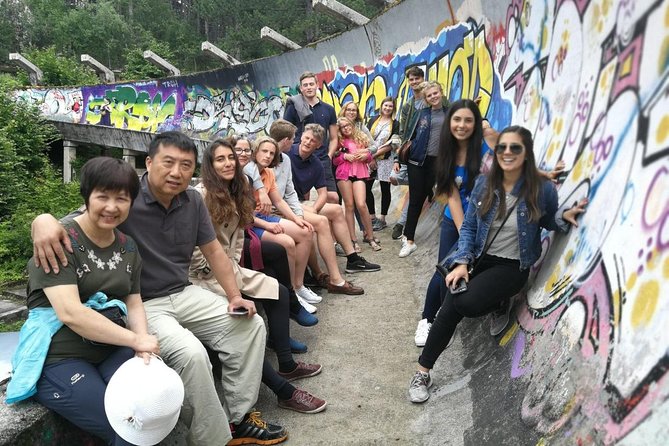
International aid played a crucial role in providing essential resources and support during the siege of Sarajevo. International organizations played a significant role in coordinating and delivering aid to the city, which was cut off from the outside world for 1425 days.
The impact of international aid was immense, as it provided much-needed food, medicine, and other essential supplies to the besieged population. International organizations such as the United Nations and various humanitarian agencies worked tirelessly to ensure that aid reached the people of Sarajevo, often risking their own lives in the process.
The aid not only met the immediate needs of the population but also helped to alleviate the suffering and improve the overall conditions in the city. Without international aid, the situation in Sarajevo during the siege would have been even more dire.
The Tunnel of Hope: A Lifeline in the Siege

Often overlooked but crucial, the Tunnel of Hope served as a lifeline during the siege of Sarajevo. This underground passage played a vital role in providing essential supplies and connecting the city with the outside world. Here are three key impacts of the Tunnel of Hope on civilian life during the siege:
1) Supply Route: The tunnel allowed for the transportation of food, medicines, and other necessities into Sarajevo. It ensured that civilians had access to basic provisions, alleviating some of the hardships they faced during the siege.
2) Communication and Contact: The Tunnel of Hope served as a lifeline for communication, enabling citizens to stay connected with their loved ones and the outside world. It provided a means of contact, both through physical transportation and the passing of letters and messages.
3) Symbol of Hope: The existence of the tunnel represented a symbol of hope and resilience for the people of Sarajevo. It demonstrated their determination to survive and their refusal to be isolated from the rest of the world. The Tunnel of Hope became a powerful testament to the human spirit in the face of adversity.
Remembering the Victims of the Siege
While the war tour in Sarajevo focuses on the historical events of the siege, it’s important to remember the victims who lost their lives during that period. Honoring the victims of the siege is a crucial aspect of understanding the impact it had on the city and its people.
The siege lasted for 1425 days and resulted in the deaths of thousands of civilians. Their lives were tragically cut short, leaving behind grieving families and a scarred community. Remembering the victims serves as a reminder of the brutality of war and the resilience of the human spirit.
It also helps future generations to comprehend the immense suffering that took place and the importance of peace and unity in preventing such tragedies from occurring again.
Sarajevo’s Sniper Alley
During the Bosnian war, travelers can explore Sarajevo’s Sniper Alley, where they can learn about the dangers faced by residents on a daily basis. This infamous street, officially known as Zmaja od Bosne, was a treacherous stretch that civilians had to traverse during the siege of Sarajevo.
Here are three key points about Sarajevo’s Sniper Alley and its impact on civilians:
Constant Threat: Sniper Alley was a deadly route where snipers targeted anyone who dared to cross. Civilians risked their lives every time they ventured out, facing the constant threat of being shot.
Humanitarian Crisis: The presence of snipers on Sniper Alley resulted in a humanitarian crisis. Residents faced severe restrictions on movement, making it difficult to access basic necessities such as food, water, and medical supplies.
Psychological Toll: The daily ordeal of navigating Sniper Alley took a significant psychological toll on the civilians of Sarajevo. Fear and anxiety were constant companions as they braved the sniper fire, leaving lasting scars on the survivors.
Visiting Sniper Alley allows travelers to gain a deeper understanding of the hardships endured by Sarajevo’s residents and the lasting impact it had on their lives.
The Siege’s End and Its Legacy
The siege’s end marked a turning point, but its legacy continued to shape the city of Sarajevo. The impact of the siege on the city’s identity cannot be understated. The scars left by the war are still visible in the physical landscape and in the hearts of its residents. However, Sarajevo has also found strength and resilience in its art and culture, which have played a crucial role in healing post-siege. Artistic expression has served as a form of therapy and a means of processing the trauma experienced during those 1425 days. From powerful murals depicting the struggles of the siege to vibrant theater performances and music festivals, Sarajevo’s artistic community has helped the city rebuild and redefine itself. The role of art and culture in the healing process cannot be underestimated.
| The Siege’s Impact on the City’s Identity | The Role of Art and Culture in Healing Post Siege |
|---|---|
| Scars visible in physical landscape and hearts of residents | Artistic expression as therapy |
| Strength and resilience found in art and culture | Processing trauma experienced during siege |
| Redefining the city’s identity | Powerful murals, theater performances, music festivals |
| Shaping the city’s legacy | Helping the city rebuild and heal |
Lessons From Sarajevo: War and Peace
One important lesson to be learned from Sarajevo is that war and peace are intricately connected and can’t be understood in isolation. The city’s experience during the war and its journey towards peace has highlighted several key lessons:
Sarajevo’s Post War Reconciliation: Sarajevo serves as a powerful example of the challenges and complexities involved in post-war reconciliation. Rebuilding trust, healing wounds, and fostering unity among diverse communities are crucial for long-lasting peace.
Impact of War on Civilian Life: The war in Sarajevo had a devastating impact on civilian life. It resulted in immense suffering, loss of lives, and destruction of infrastructure. Understanding the human cost of war emphasizes the need for peaceful solutions and the protection of civilian populations.
Lessons for the Future: Sarajevo’s experience provides important lessons for preventing conflicts and promoting peace. It highlights the importance of diplomacy, dialogue, and international cooperation in resolving disputes and preventing the escalation of violence.
Exploring Sarajevo’s War History
Visitors to Sarajevo can explore its war history by exploring various sites and landmarks that offer a comprehensive understanding of the city’s experiences during the siege.
Sarajevo’s war museums, such as the War Childhood Museum and the Sarajevo Tunnel Museum, provide an immersive experience through exhibits and artifacts that depict the hardships faced by the city’s residents. These museums not only showcase the physical aspects of the war but also share personal stories from survivors, highlighting the human impact of the conflict.
Plus, visitors can explore significant landmarks like the Markale Market, the site of devastating bombings, and the Sniper Alley, a street that was heavily targeted during the siege.
Common Questions
How Long Did the Siege of Sarajevo Last?
The siege of Sarajevo lasted for 1425 days. It had significant long-term effects on the city, including extensive damage and loss of life. Humanitarian aid played a crucial role in providing assistance to the affected population during this difficult period.
What Were Some of the Daily Struggles Faced by the People of Sarajevo During the Siege?
During the siege of Sarajevo, the people faced daily hardships such as lack of food, water, electricity, and medical supplies. They developed survival strategies including underground tunnels, reliance on aid, and resilience in the face of constant danger.
Were There Any Notable Heroes or Heroines Who Emerged During the Siege?
Notable heroes and heroines emerged during the siege of Sarajevo. Their actions had a significant impact and their stories are truly inspirational. The survivors’ resilience in the face of adversity is a testament to their strength.
How Did Sarajevo Rebuild and Recover After the Siege?
Sarajevo’s recovery from the siege involved extensive reconstruction efforts to rebuild the city’s infrastructure and restore normalcy. Plus, efforts were made to address the psychological trauma experienced by the residents through counseling and support programs.
What Is the Significance of the Tunnel of Hope in the Context of the Siege?
The tunnel of hope played a significant role in the context of the siege, serving as an underground passage for supplies and a lifeline for the people of Sarajevo. It symbolizes the resilience and determination of the underground resistance during that time.
The Sum Up
To sum it up, the ‘Sarajevo 1425 Days Under the Siege – War Tour’ offers a unique and informative experience for visitors seeking to understand the historical events that unfolded during the Bosnian War.
Led by knowledgeable guides, participants are guided through significant sites and landmarks, gaining insight into the daily struggles and heroic acts of the people of Sarajevo.
This tour serves as a powerful reminder of the city’s resilience and offers an opportunity for reflection and remembrance.
More Tours in Sarajevo
More Tour Reviews in Sarajevo
- From Sarajevo: Private Full-Day Kravica Waterfalls Tour
- From Sarajevo: Bijambare Caves and Nature Park
- Experience Sarajevo: Via Ferrata on Trebevi Mountain
- Private Full Day Safari Tour
- Bosnian Pyramid: The World’s Largest Pyramid (From Sarajevo)
- Utopia of Titos Yugoslavia, Titos Bunker & Siege of Sarajevo
Looking for something different? Other Sarajevo activities we've written about
- From Sarajevo: Private Full-Day Kravica Waterfalls Tour
- From Sarajevo: Bijambare Caves and Nature Park
- Experience Sarajevo: Via Ferrata on Trebevi Mountain
- Private Full Day Safari Tour
- Bosnian Pyramid: The World’s Largest Pyramid (From Sarajevo)
- Utopia of Titos Yugoslavia, Titos Bunker & Siege of Sarajevo
- Transfer tour Sarajevo-Dubrovnik
- Sarajevo War Tour, Siege, Tunnel of Hope & Trebevic Mountain
- Sarajevo 1425 days under the siege – War Tour
- Sarajevo Self Guided Sherlock Holmes Murder Mystery Game
- PRIVATE Herzegovina Tour from Sarajevo
- Sarajevo: Mostar, Konjic, Dervish House, Pocitelj & Kravica Falls
